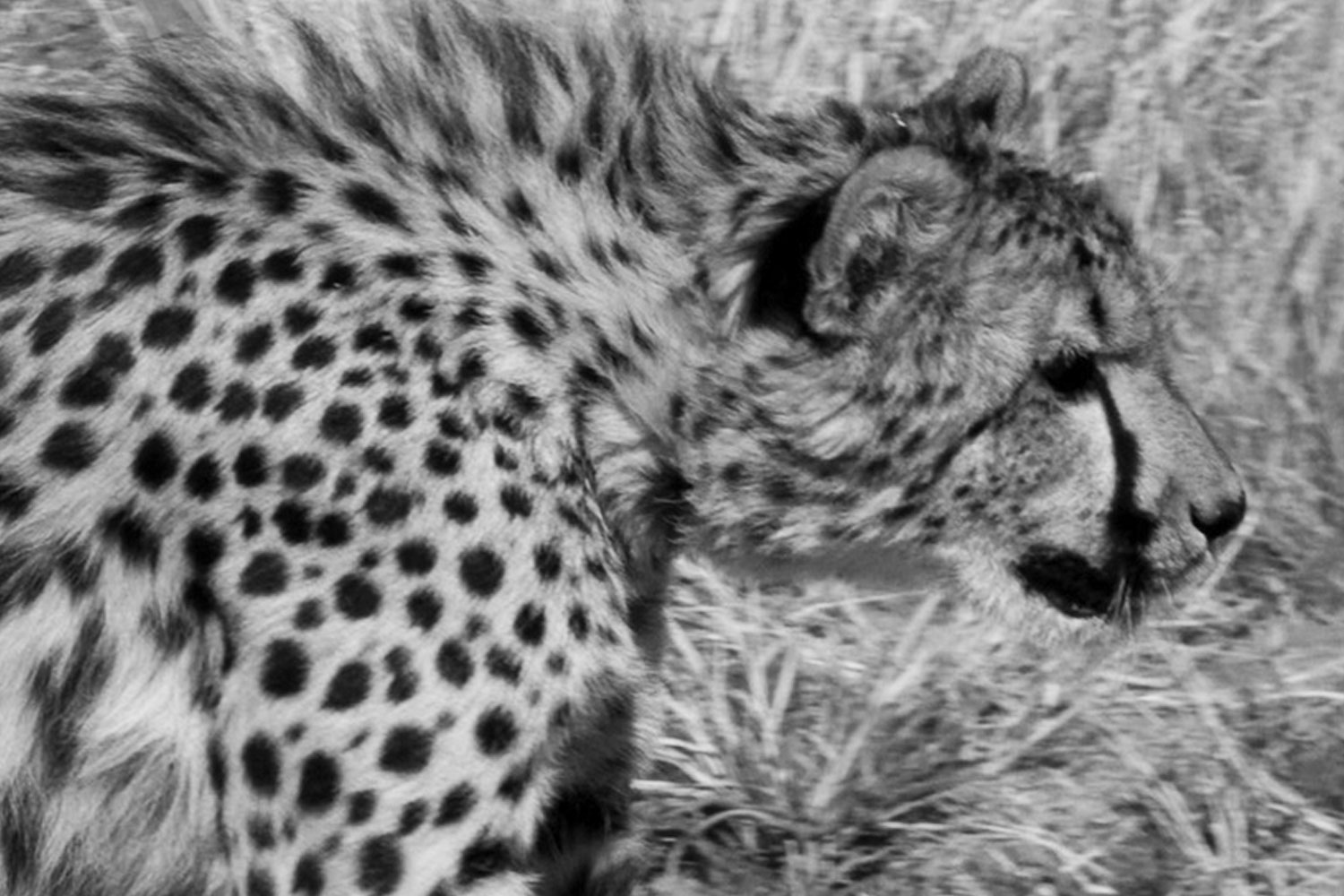Caring for the Cheetahs as a Veterinarian in Somaliland
-

- by Anahi Hidalgo March 31, 2022

I am Anahi Hidalgo; an Ecuadorian veterinarian, and I am currently the Head Veterinarian at Cheetah Conservation Fund in Somaliland.
My first wildlife patient was a female wild Harpy Eagle; she marked my future path in wildlife veterinary work. When I first met the eagle, she was in critical condition having been injured by an illegal hunting incident. She was brought to the wildlife hospital where I was volunteering and had several pellets still in her body. One of them caused a humerus fracture that needed emergency surgery. It was a long process, but thanks to a multidisciplinary team of professionals, the eagle made a full recovery and was released into her natural habitat. Seeing her in flight again, on her way back home is one of the most incredible experiences in the world. Every animal that you can help and give a second chance in the wild is invaluable, it fills you with immense happiness and gives you the strength and spark to continue and even improve your work.

I graduated in 2018 from Universidad San Francisco de Quito in Ecuador, South America. Since the beginning of my studies, I knew that my field of work will be wildlife, so I started volunteering and doing externships in different institutions being able to gain experience working with Ecuadorian, Colombian and Pacific Northwest American wildlife. After my graduation, I kept developing my skills and putting into practice all my learning when I worked in the Galapagos Islands with Small Animals and Wildlife. I then became the Main Veterinarian of Fundación Condor Andino, where I was primarily involved in field work and veterinary research on Wild Andean Condors and Black-chestnut Eagles. We performed preventative medicine in our rescue center, tutored veterinary students and organized spay and neuter campaigns for dogs and cats in critical conservation areas.
In my search of new growth opportunities and adventures I saw the job advert from Cheetah Conservation Fund in a Facebook post. After checking out the organization and talking to the veterinarian at that time I decided to apply. The center is located just outside of Hargeisa, capital of Somaliland (Country not officially recognized but has its own government and has been independent from Somalia since 1991). I was a bit nervous since Somaliland is so far away from home, and there were a lot of worries from my family and friends regarding my security. I can happily say that security wise, it has been even safer than many other cities and countries that I have been. Of course, there is always concern of any clan misunderstanding but the government seems to be able to handle those well.
I did experience a bit of culture shock coming from a Western society to a conservative Muslim society. It seems to be more challenging for women than men; there are more restrictions for women and choices are limited for women. Nevertheless, I have always tried to respect the culture and follow certain advisable rules while keeping my own culture and believes intact.

The amount of progress in building the series of Cheetah Safe Houses in the past few years has been remarkable. We are now also working on building a big sanctuary as part of a new national park project led by the Somaliland Ministry of Environment and Climate Change. While I have been here, CCF’s facilities have seen big improvements too. We were given good diagnostic equipment such an X-ray machine and an ultrasound from SoundVet and we have a good stock of meds and supplies all donated from abroad. It is very difficult to get most of the essential medicines that we need in the country. We also have a hemogram and biochemistry machine that come in handy during the process of diagnosis. The team is made up of many international people from all over the world and also some very friendly local staff. We are excited and working hard the new and bigger facility. It will give a better quality of life to all the orphaned and injured confiscated cheetahs that CCF is caring for.
When I first arrived, we had around 55 cheetahs under our care and now we have almost 85 animals. As you notice, every year we keep receiving cubs, victims from the wildlife trade and human-wildlife conflict. We are working on building and delivering education, outreach in the community, veterinary training, and research projects so that we can stop the trade. The ministry/government is also working to improve and tighten up the trafficking laws and enforcement. The trade will not be stop unless the demand for cheetahs as pets stops. People worldwide need to understand that wild animals are not pets they are not domestic animals, and they belong in the wild.
The work has been a challenging. We have a lot to do but it’s also a very gratifying job. Being able to help these cheetahs is so fulfilling. Seeing them recover, grow and trust again in humans is so fulfilling. And who knows if in a couple of years, CCF will be able to start a reintroduction program in Somaliland and orphaned cheetahs will return to the wild and repopulate their natural habitat.


Related Reading
-
December 4, 2024
The Role of A Cheetah Keeper at CCF -
June 6, 2024
A Full Circle Experience! -
December 16, 2022
An Internship at CCF: Field of Dreams






